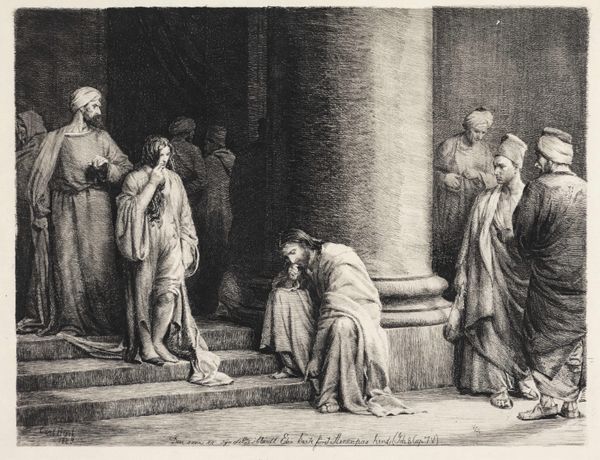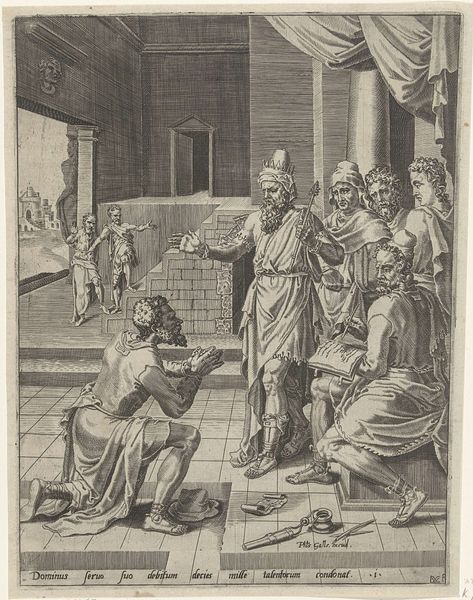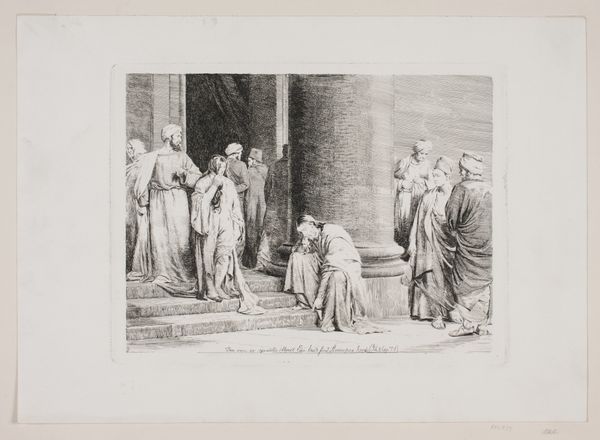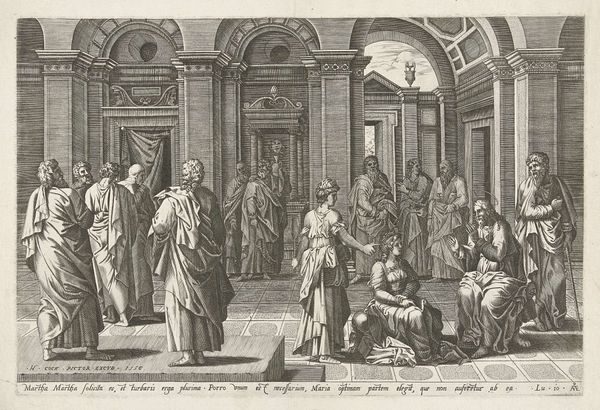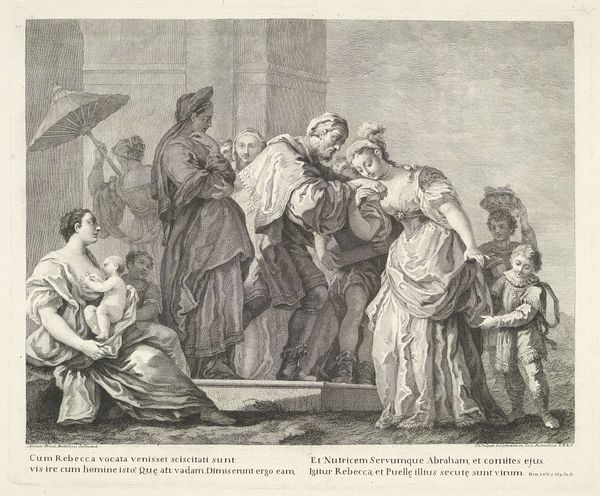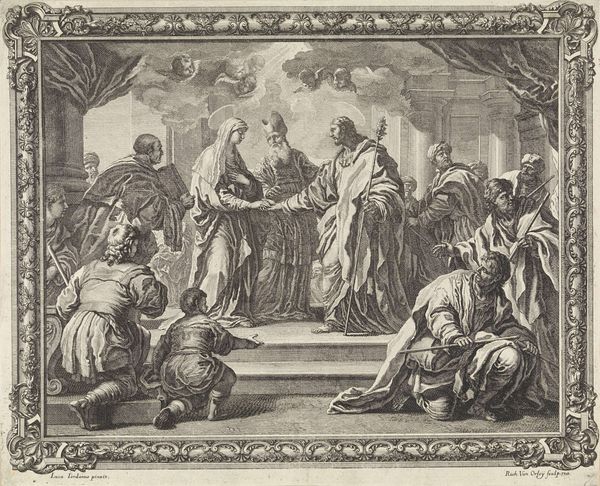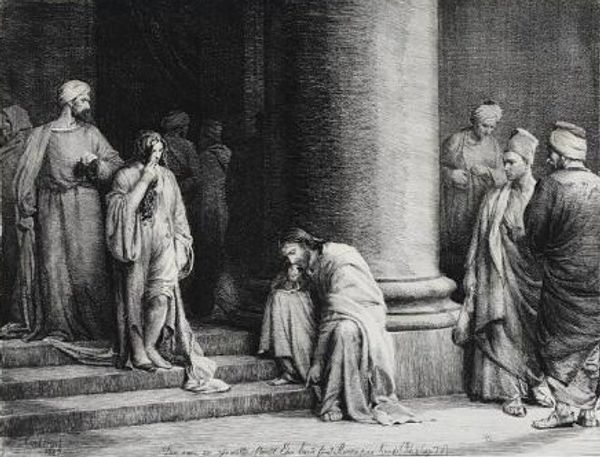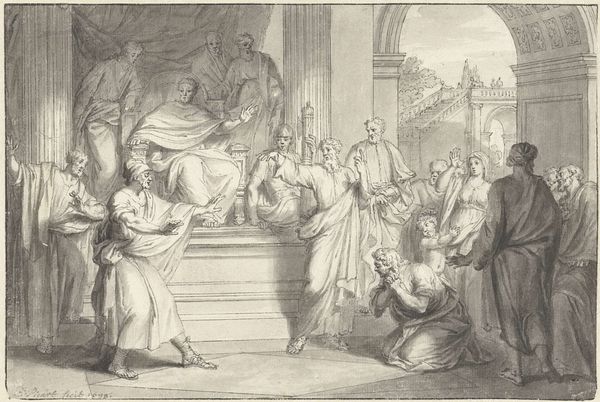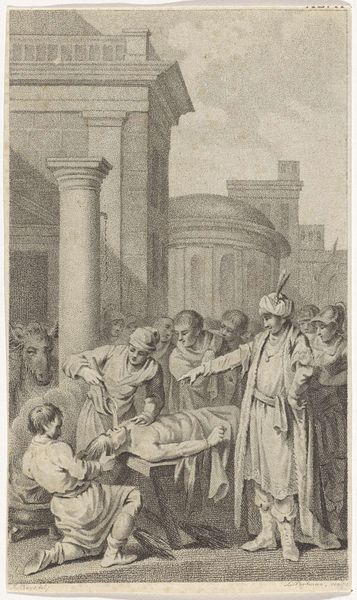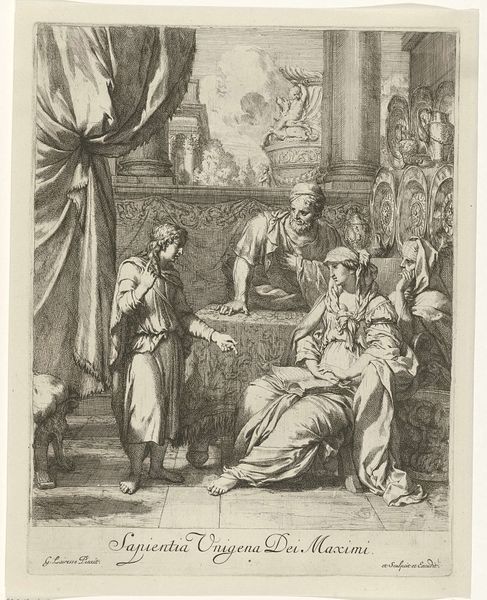
print, etching
#
16_19th-century
#
narrative-art
# print
#
etching
#
history-painting
#
academic-art
#
realism
Dimensions: 240 mm (height) x 341 mm (width) (bladmaal), 210 mm (height) x 277 mm (width) (plademaal)
Curator: Let’s turn our attention to Carl Bloch’s etching from 1889, "Christ and the Woman Taken in Adultery", currently residing at the SMK in Copenhagen. It's quite an intense piece, isn't it? Editor: It is. Immediately I'm struck by the tonal contrasts, a somber mood. Everything feels heavy, even the light seems to press down on the figures. The scale emphasizes their vulnerability. Curator: Bloch worked primarily with etchings at this stage, focusing on printmaking techniques that would reproduce at scale his dramatic oil paintings for ecclesiastical consumption. The layering here, the fine network of lines he creates, allowed for a remarkable range of tones, mimicking the tenebrism of Baroque painting that informed his style. Editor: Tenebrism is spot on! I see that dramatic interplay of light and shadow used to heighten the drama. Christ, seated lower, is both the focal point and yet also appears withdrawn, a quiet strength amidst the chaos of judgment. I can feel a strange ambivalence from Him. Curator: Consider also the economics here. Prints like these, circulating throughout Denmark, made sacred stories visible to a broader audience at affordable prices. It brings those academic styles to the domestic space for the common man. Editor: Interesting that the scene of confrontation becomes democratized as a commodity. Personally, though, it resonates on a deeper level, speaking of the conflict between societal norms and personal grace. The averted gaze of the woman, the accusing fingers, versus Christ's calm defiance… it makes you wonder who the truly condemned are here. Curator: Exactly! The reproduction diminishes some qualities of a brushstroke but gains something back through distribution; access becomes a factor for piety in these Scandinavian countries, in line with social conditions. It speaks volumes about the intersection of art, religion, and social standing in the late 19th century. Editor: Thinking about those stark materials of print, I still am struck by that overwhelming atmosphere that Bloch achieved. An evocative study of shame, forgiveness, and societal hypocrisy – and made accessible. It gives you a lot to reflect upon, doesn’t it? Curator: Absolutely. It highlights how art serves as a material reflection of prevailing religious and societal norms, reproduced, consumed and negotiated in different social spheres.
Comments
No comments
Be the first to comment and join the conversation on the ultimate creative platform.
